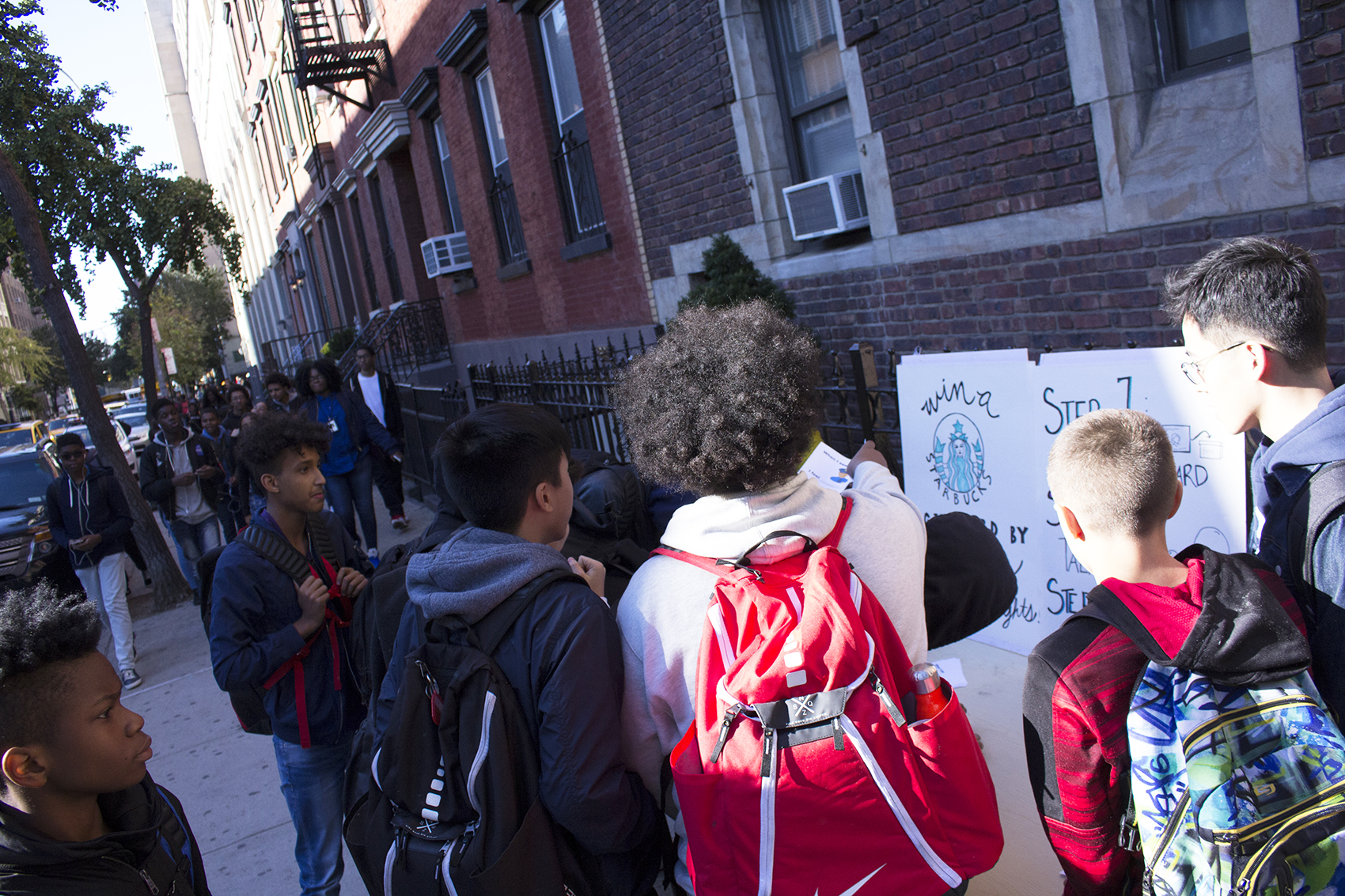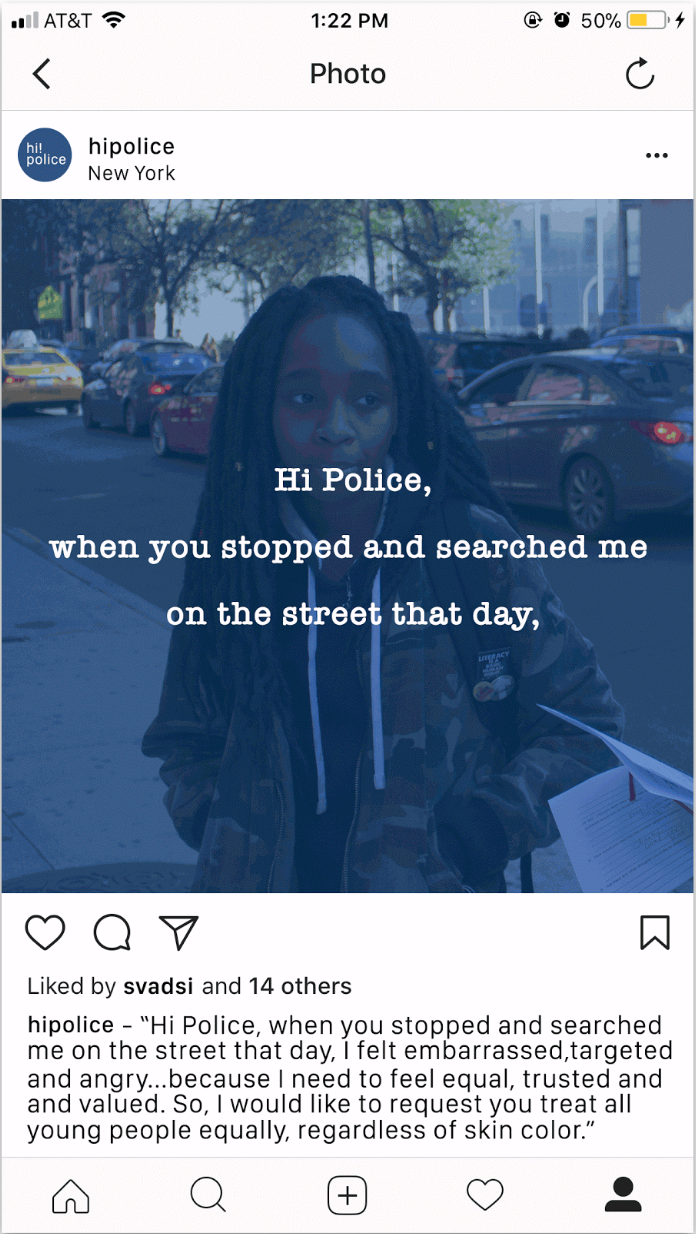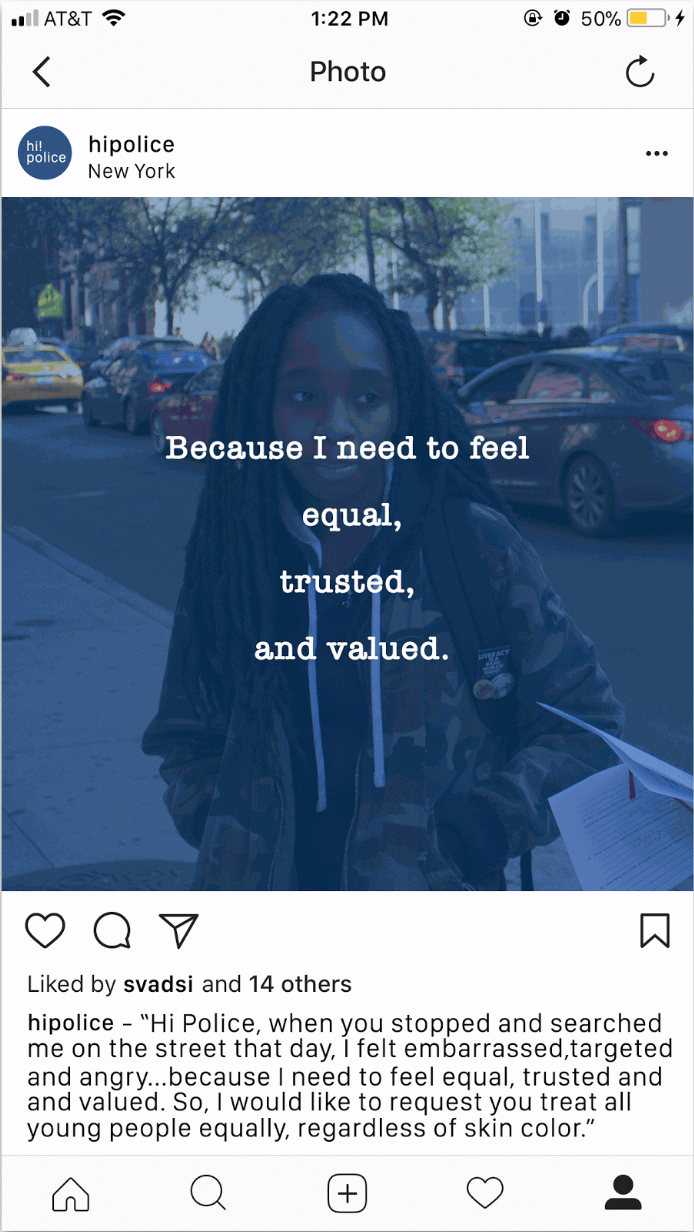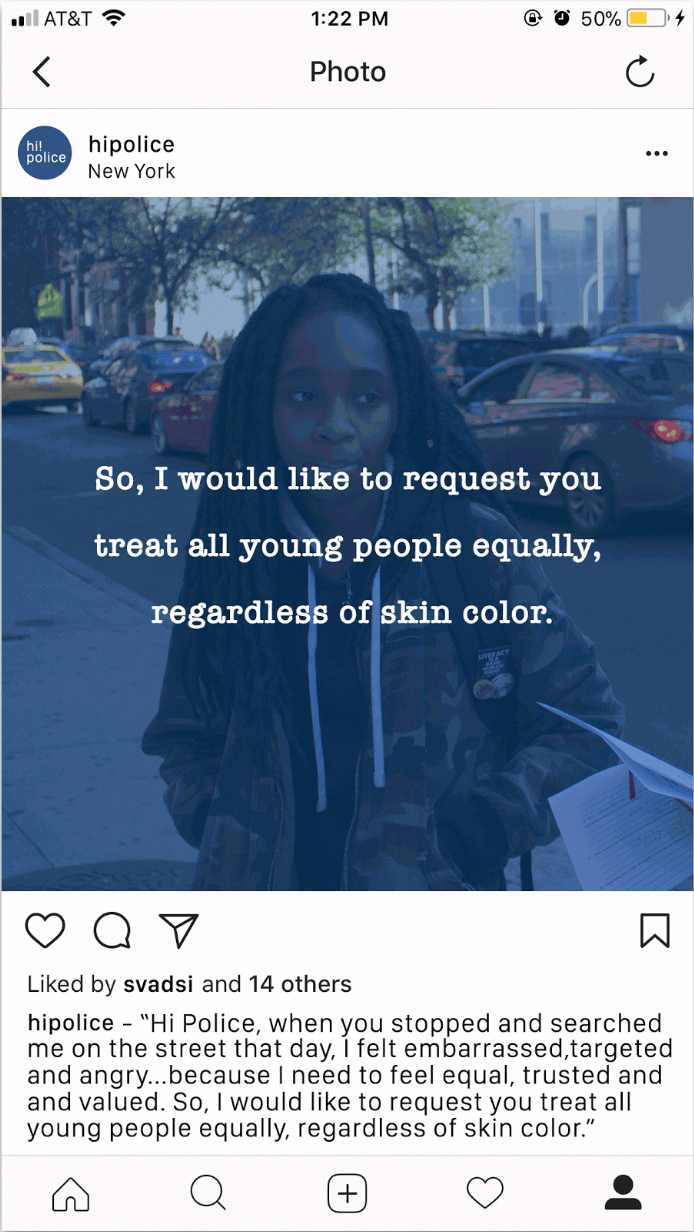POLICE-COMMUNITY RELATIONS
Emphasis:
Design Research
Concept Development
Data Analysis
Design Research
Concept Development
Data Analysis
Tasked with understanding how to improve community and police relations in New York City, we needed to narrow down to a pinhole what our problem our project was going to be solving.
How do teachers communicate with students about authority?
December 2017


Our approach started with an intercept and card sorting activity in a populated high school school street. With the data we collected in the initial round of research, we wanted to see how we could connect it to our continuing observations.



We wanted to understand exactly what we were trying to do. The students had a generally negative view of police, so we needed to see if this view was the same with all of our stakeholders. We continued our research with interviews with teachers from various high schools, YMCA program coordinators and parole officers.
“The cops are against you, it’s not fair b/c they’re supposed to be there to protect you...”
- Student
“Kids are very aware of what is in the news – there is a ‘cops are racist’ mentality amongst students.”
- Teacher
We discovered that across the community, there is no shared understanding of the challenges, constraints and current state of police-community relations. This is particularly evident in the education system where the structures in place to inform the next generation of citizens about their rights and responsibilities are reinforcing this gap.
So we ideated and developed a concept for connecting the two communities – police and community – in a neutral way.
So we ideated and developed a concept for connecting the two communities – police and community – in a neutral way.
Non-Violent Communications Campaign



